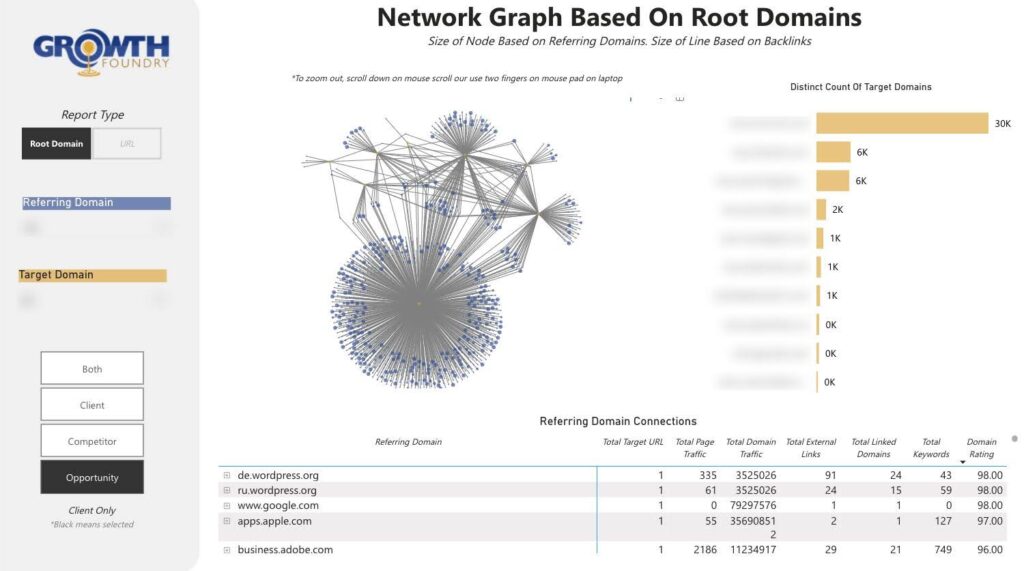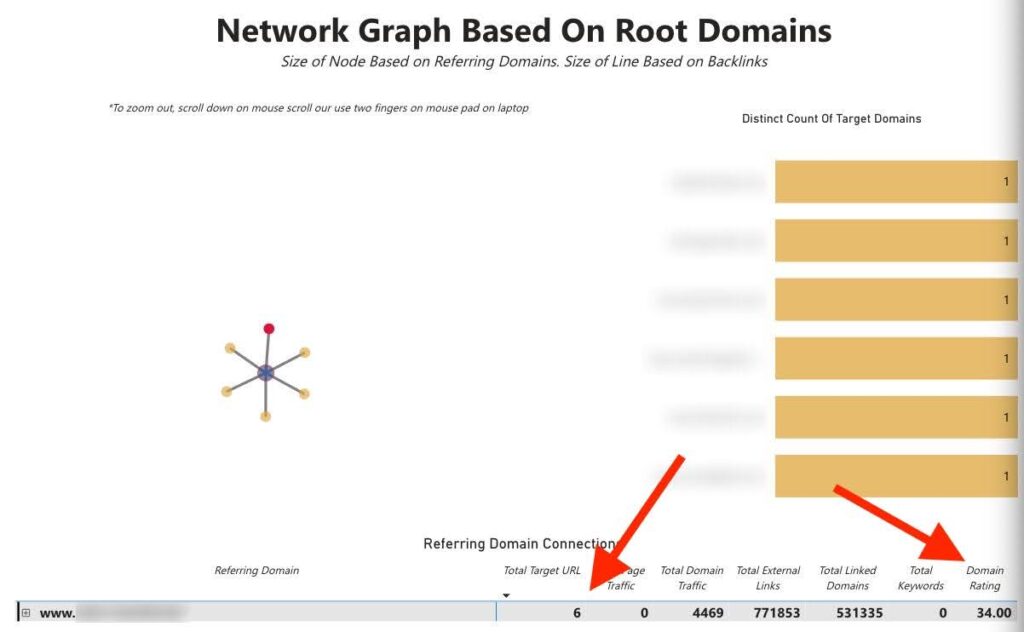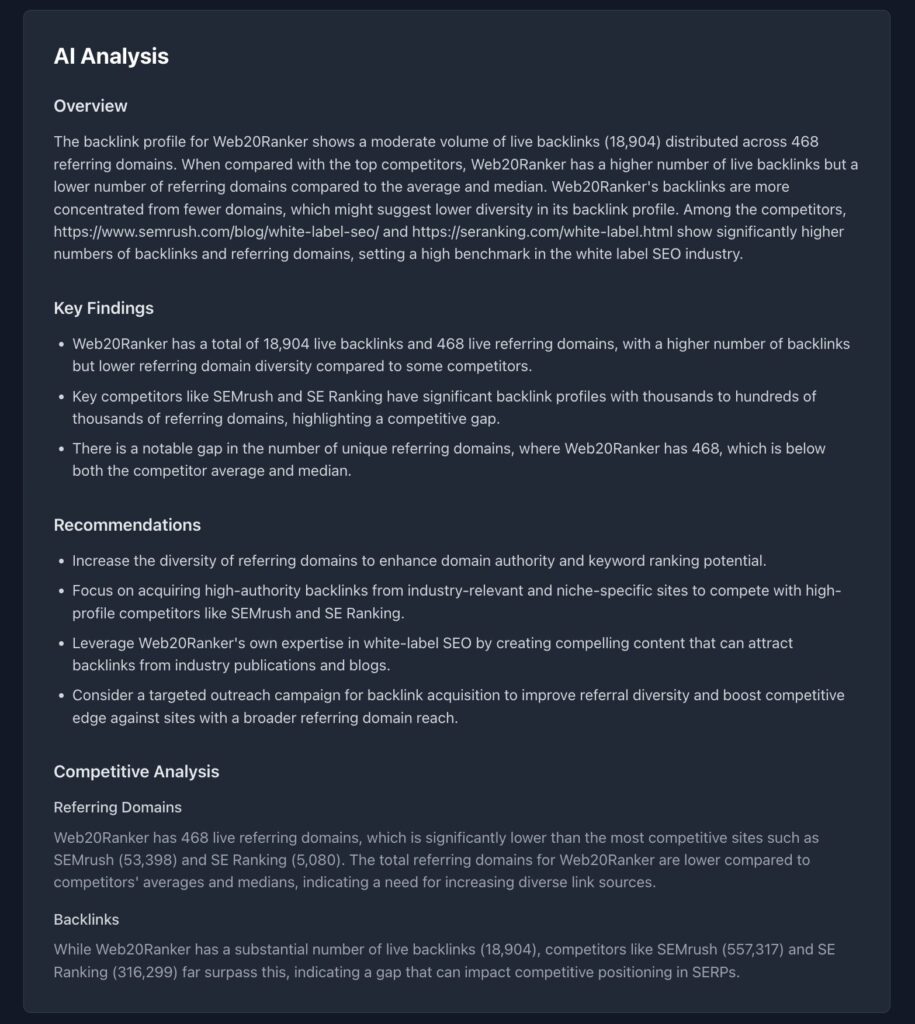As we embark on a detailed examination of backlink analysis and the meticulous planning required for its execution, it is vital to establish our core philosophy. This foundational perspective is crafted to streamline our methodology in constructing effective backlink campaigns, offering clarity and direction as we delve deeper into the nuances of this subject.
In the competitive landscape of SEO, it is crucial to prioritize the reverse engineering of our competitors’ successful strategies. This essential step grants us valuable insights that will serve as the foundation for our action plan, guiding our optimization efforts effectively.
Navigating Google’s intricate algorithms can be quite daunting, especially since we often depend on limited resources such as patents and quality rating guidelines. Although these materials can spark innovative SEO testing ideas, it is imperative to approach them with a level of skepticism and not take them at face value. The applicability of older patents in the context of today’s ranking algorithms is ambiguous, thus it becomes essential to collect these insights, conduct our tests, and validate our findings using contemporary data.

The SEO Mad Scientist functions as a detective, leveraging these clues to formulate tests and experimental strategies. While this abstract layer of understanding is undeniably valuable, it should only represent a fraction of your comprehensive SEO campaign strategy.
Next, we will explore the critical role of competitive backlink analysis in enhancing our understanding of the landscape.
I assert, with unwavering confidence, that reverse engineering successful components within a SERP is the most effective strategy to inform your SEO optimizations. This approach is unmatched in its efficacy.
To further illustrate this concept, let’s revisit a foundational principle from basic algebra. Solving for ‘x’ or any variable involves evaluating existing constants and applying a series of operations to deduce the variable’s value. By observing our competitors’ strategies, the topics they address, the links they acquire, and their keyword densities, we can draw significant insights.
However, while amassing hundreds or even thousands of data points may seem advantageous, much of this information may not yield meaningful insights. The true value in analyzing extensive datasets lies in the identification of shifts that correlate with changes in ranking. For many, a focused compilation of best practices derived from reverse engineering will be sufficient for effective link building.
The final aspect of this strategy encompasses not merely achieving parity with competitors but also striving to surpass their performance. While this approach may seem broad, particularly in fiercely competitive niches where matching leading websites could take years, reaching baseline parity is merely the initial phase. A comprehensive, data-driven backlink analysis is vital for your success.
After establishing this baseline, your objective should be to outpace competitors by sending the appropriate signals to Google to enhance rankings, ultimately securing a prominent position within the SERPs. Regrettably, these critical signals often distill down to common sense in the realm of SEO.
While I find this notion uncomfortable due to its subjective nature, it is crucial to acknowledge that experience, experimentation, and a proven track record of SEO success are indispensable in cultivating the confidence necessary to pinpoint where competitors falter and how to bridge those gaps in your strategy.
5 Proven Steps for Dominating Your SERP Landscape
By delving into the intricate ecosystem of websites and links that shape a SERP, we can unveil a treasure trove of actionable insights that are critical for developing a robust link plan. In this segment, we will systematically organize this information to pinpoint valuable patterns and insights that will fortify our campaign.

Let’s take a moment to consider the reasoning behind this structured approach to organizing SERP data. Our methodology emphasizes a deep dive into the top competitors, providing a thorough narrative as we explore further.
A few Google searches will reveal an overwhelming number of results, often exceeding 500 million. For example:


While our analysis primarily focuses on the top-ranking websites, it is important to recognize that the links directed toward even the top 100 results can yield statistically significant insights, provided they do not fall into the categories of spam or irrelevance.
Our goal is to gain comprehensive insights into the factors influencing Google’s ranking decisions for top-ranking sites across various queries. With this information, we are better positioned to develop effective strategies. Here are just a few objectives we can achieve through this analysis.
1. Identify Crucial Links Shaping Your SERP Landscape
In this context, a key link is characterized as a link that consistently appears in the backlink profiles of our competitors. The accompanying image illustrates this concept, indicating that certain links point to nearly every site within the top 10 rankings. By analyzing a wider array of competitors, you can uncover even more intersections, as demonstrated here. This strategy is anchored in solid SEO theory, as corroborated by various reputable sources.
- https://patents.google.com/patent/US6799176B1/en?oq=US+6%2c799%2c176+B1 – This patent enhances the original PageRank concept by incorporating topics or context, recognizing that different clusters (or patterns) of links possess varying significance depending on the subject matter. It serves as an early example of Google refining link analysis beyond a singular global PageRank score, proposing that the algorithm detects patterns of links among topic-specific “seed” sites/pages and utilizes that information to adjust rankings.
Key Excerpts for Effective Backlink Analysis
Implication: Google identifies distinct “topic” clusters (or groups of sites) and employs link analysis within those clusters to generate “topic-biased” scores.
While it doesn’t explicitly state “we favor link patterns,” it indicates that Google examines how and where links arise, categorized by topic—a more nuanced approach than relying on a single universal link metric.
“…We establish a range of ‘topic vectors.’ Each vector ties to one or more authoritative sources… Documents linked from these authoritative sources (or within these topic vectors) earn an importance score reflecting that connection.”
Insightful Quote from Research Findings
“An expert document is focused on a specific topic and contains links to numerous non-affiliated pages on that topic… The Hilltop algorithm identifies and ranks documents that links from experts point to, enhancing documents that receive links from multiple experts…”
The Hilltop algorithm is designed to pinpoint “expert documents” for a topic—pages recognized as authorities in a specific field—and analyzes the linking patterns they exhibit. These linking patterns can convey authority to other pages. While not explicitly stated as “Google recognizes a pattern of links and values it,” the underlying principle suggests that when a group of acknowledged experts frequently links to the same resource (pattern!), it constitutes a strong endorsement.
- Implication: If several experts within a niche link to a specific site or page, it is perceived as a strong (pattern-based) endorsement.
Although Hilltop is an older algorithm, it is believed that aspects of its design have been incorporated into Google’s broader link analysis algorithms. The concept of “multiple experts linking similarly” effectively demonstrates that Google scrutinizes backlink patterns.
I consistently seek to identify positive, prominent signals that recur during competitive analysis and aim to leverage those opportunities whenever feasible.
2. Backlink Analysis: Discovering Unique Link Opportunities via Degree Centrality
The journey to identify valuable links for achieving competitive parity commences with a thorough analysis of the top-ranking websites. Manually combing through dozens of backlink reports from Ahrefs can be a tedious endeavor. Furthermore, delegating this workload to a virtual assistant or team member may result in a backlog of tasks.
Ahrefs provides users with the ability to input up to 10 competitors into their link intersect tool, which I consider to be the premier tool for link intelligence. This tool empowers users to streamline their analysis if they are comfortable navigating its depth.
As previously mentioned, our focus is on expanding our reach beyond the conventional list of links that other SEOs are targeting to achieve parity with the top-ranking websites. This strategic approach provides us with a competitive edge during the preliminary planning stages as we work to influence the SERPs.
Thus, we implement various filters within our SERP Ecosystem to identify “opportunities,” defined as links that our competitors possess but we do not.

This process enables us to swiftly identify orphaned nodes within the network graph. By sorting the table by Domain Rating (DR)—while I’m not overly fond of third-party metrics, they can be valuable for quickly pinpointing significant links—we can uncover powerful opportunities to include in our outreach workbook.
3. Streamline and Control Your Data Pipelines Effectively
This strategy facilitates the seamless addition of new competitors and their integration into our network graphs. Once your SERP ecosystem is established, expanding it becomes a smooth process. You can also eliminate unwanted spam links, combine data from various related queries, and maintain a more comprehensive database of backlinks.
Effectively managing and filtering your data is the first step toward generating scalable outputs. This level of detail can reveal numerous new opportunities that may have otherwise gone unnoticed.
Transforming data and creating internal automations while introducing additional layers of analysis can stimulate the development of innovative concepts and strategies. Customize this process, and you will uncover numerous potential applications for such a setup, far beyond what can be encompassed in this article.
4. Unearth Mini Authority Websites Utilizing Eigenvector Centrality
In the context of graph theory, eigenvector centrality posits that nodes (websites) gain importance as they connect with other significant nodes. The greater the importance of the neighboring nodes, the higher the perceived value of the node itself.

While this may not be beginner-friendly, once the data is organized in your system, scripting to uncover these valuable links becomes a straightforward task, and even AI can assist you in this endeavor.
5. Backlink Analysis: Utilizing Disproportionate Competitor Link Distributions
While the concept may not be novel, analyzing 50-100 websites within the SERP and pinpointing the pages that attract the most links is an effective strategy for deriving valuable insights.
We can concentrate solely on the “top linked pages” on a site, but this approach often yields limited beneficial information, particularly for well-optimized websites. Typically, you will notice a few links directed at the homepage and the primary service or location pages.
The optimal approach is to target pages that receive a disproportionate number of links. To achieve this programmatically, you will need to filter these opportunities through applied mathematics, with the specific methodology left to your discretion. This task can be intricate, as the threshold for identifying outlier backlinks can vary significantly based on the overall link volume—for instance, a 20% concentration of links on a site with only 100 links versus one with 10 million links represents a drastically different scenario.
For example, if a single page garners 2 million links while hundreds or thousands of other pages collectively attract the remaining 8 million, this indicates a need for us to reverse-engineer that particular page. Was it a viral success? Does it provide a valuable tool or resource? There must be a compelling reason behind the influx of links.
Backlink Analysis: Identifying Unflagged Scores
With this invaluable data, you can start to investigate the reasons why certain competitors are acquiring unusual quantities of links to specific pages on their site. Leverage this understanding to inspire the creation of engaging content, resources, and tools that users are likely to link to.
The potential for utilizing data is vast. This justifies dedicating time to developing a thorough process for analyzing larger sets of link data. The opportunities available for you to capitalize on are virtually limitless.
Backlink Analysis: A Comprehensive Step-by-Step Guide to Crafting an Effective Link Plan
The initial step in this process involves sourcing high-quality backlink data. We highly recommend Ahrefs due to its consistently superior data quality compared to its competitors. However, blending data from multiple tools can enhance your overall analysis if feasible.
Our link gap tool serves as an exceptional solution. Simply input your website, and you’ll receive all the critical information:
- Visualizations of important link metrics
- URL-level distribution analysis (both live and total)
- Domain-level distribution analysis (both live and total)
- AI-driven analysis for deeper insights
Map out the precise links you’re missing—this targeted focus will assist in closing the gap and strengthening your backlink profile with minimal guesswork. Our link gap report offers more than just graphical data; it also includes AI analysis, providing an overview, key findings, competitive analysis, and link recommendations.
It’s not uncommon to find unique links on one platform that aren’t available on others; however, consider your budget and your capacity to process the data into a unified format.
Next, you will need a data visualization tool. There is no shortage of options available to help you achieve your objectives. Here are a few resources to assist you in selecting a suitable tool:
The Article Backlink Analysis: A Data-Driven Strategy for Effective Link Plans Was Found On https://limitsofstrategy.com
Post navigation
Previous Post
 San Miguel de Allende Travel Logistics: Currency & Tips
San Miguel de Allende Travel Logistics: Currency & Tips
